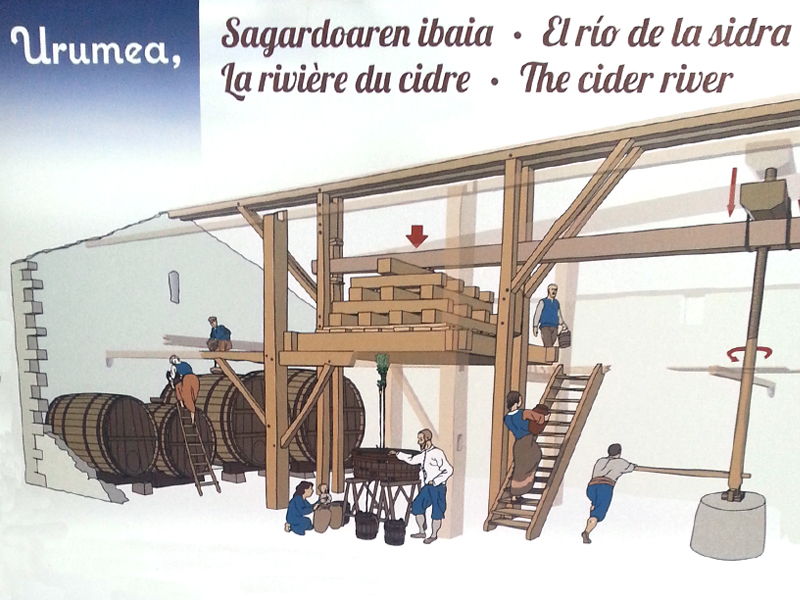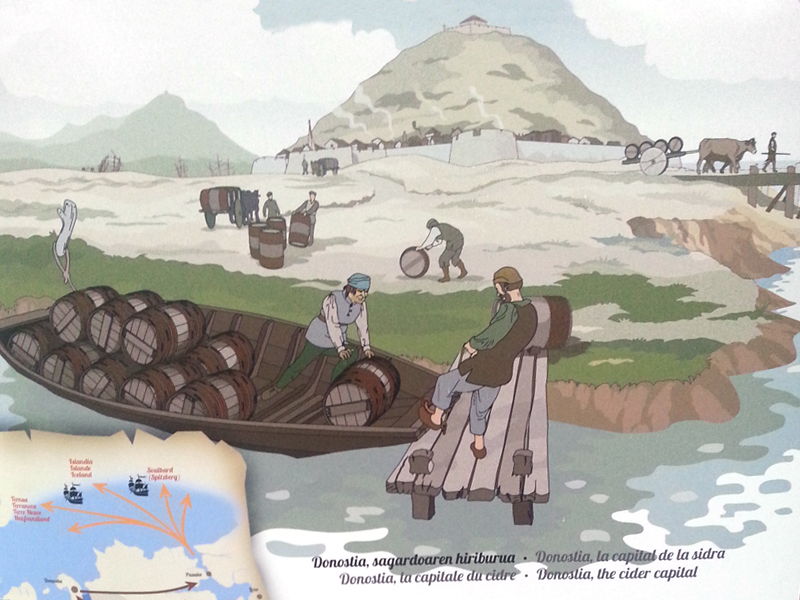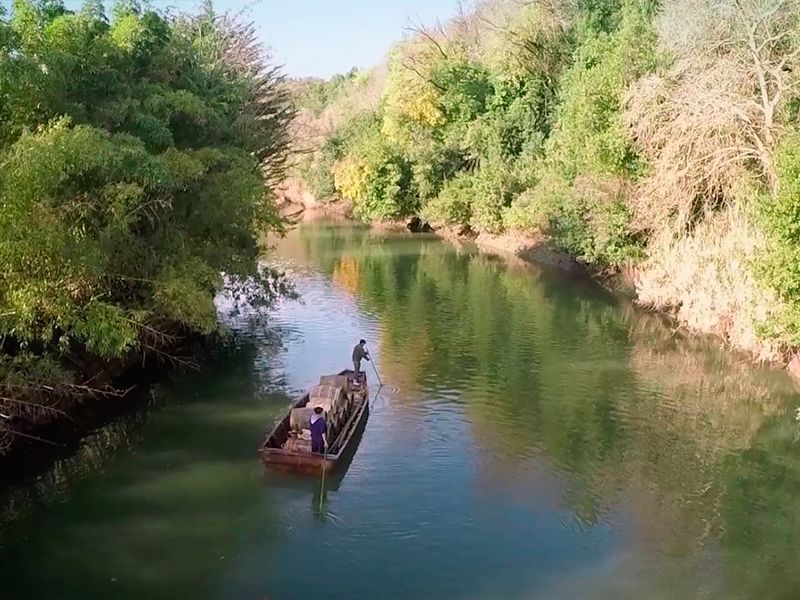28.02.2017

In the past, the cider made at many of the farmsteads around Astigarraga was taken to San Sebastián to be drunk in the city's cider houses or for the Gipuzkoan whaling fleet, whose main destination was Newfoundland, on the other side of the Atlantic Ocean.
For many centuries and up to the 19th century, the main transport route between Astigarraga and San Sebastián was the river Urumea. Transport was by wooden barges called alas or gabarras, which exploited both the current in the river and the rise and fall of tides. The barrels of cider were loaded at the ports on the Urumea in Astigarraga and unloaded in the old San Sebastián port of Santa Catalina. From here, wagons drawn by oxen (gurdiak) were used to take the barrels into the city.

Thanks to our research work, we know that from the early 16th century onwards two of the cider-making farmsteads in Astigarraga close to the Urumea were Petritegi and Lizeaga, which grew their own apples, made cider and had their own piers.

This is why the Lizeaga and Petritegi cider houses in Astigarraga want to revive this ancient local tradition and offer it to the public, so bringing alive and sharing our history and culture.